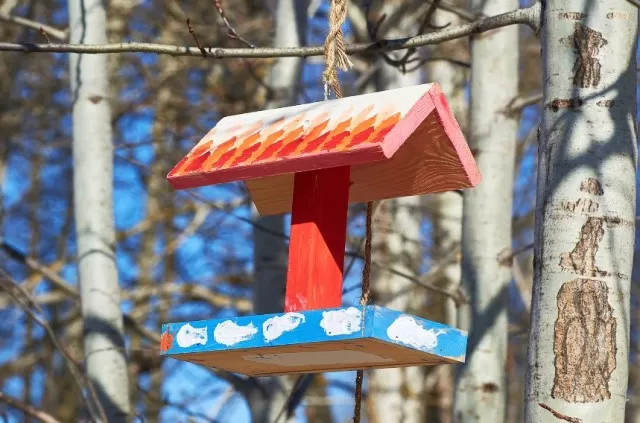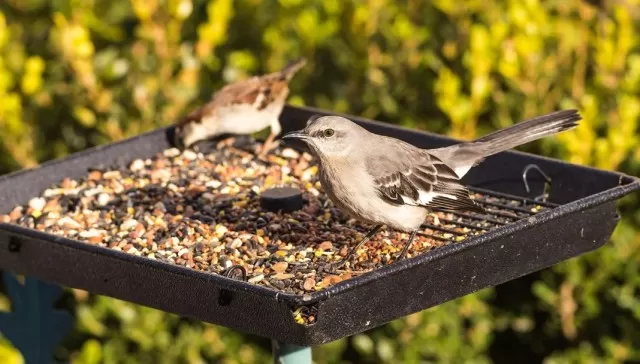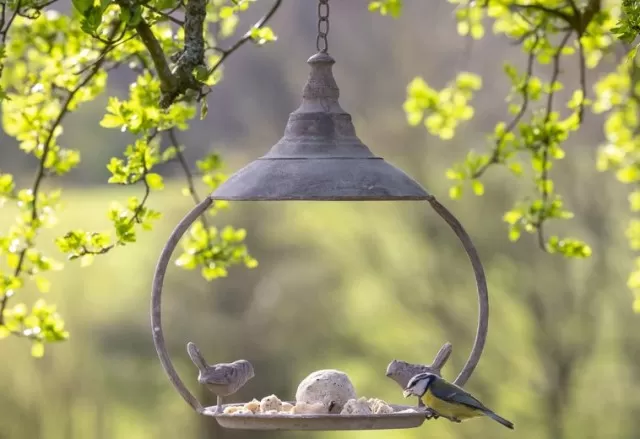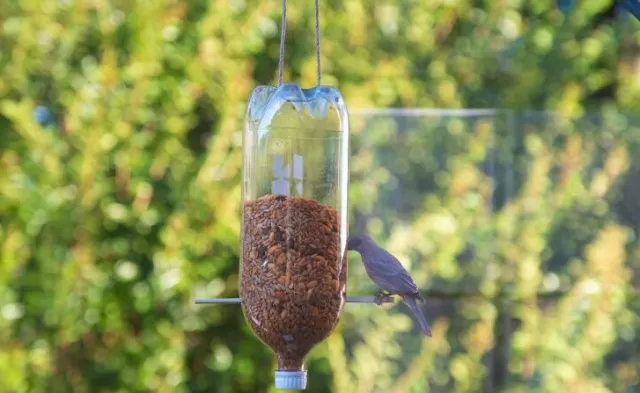Bird feeders, regardless of their type, demand regular cleaning, especially during warm or wet seasons.
Proper Maintenance of Bird Feeders: When and How to Clean Them

According to John Rowden, the senior director of bird-friendly communities at the National Audubon Society, “Seed and suet feeders should undergo cleaning at least once every other week.
Hummingbird feeders, utilizing a sugar solution, require cleaning every few days. “.
In cooler and drier months, seed and suet feeders can accumulate harmful bacteria if not cleaned every other week.
In contrast, humid or hot weather conditions are conducive to bacterial growth, necessitating more frequent cleaning during warmer seasons to maintain the safety and appeal of the feeders to birds.
Additional indicators that it’s time to clean a Bird feeder include wet seed or cloudy nectar.
As Rowden advises, “If the seed has become wet due to heavy rain, it’s advisable to clean it out. Furthermore, if the solution in a hummingbird feeder has become cloudy, it’s time to replace it.
“.
What to Avoid When Cleaning Bird Feeders:

While cleaning bird feeders, it’s essential to prioritize safety for yourself, your outdoor surroundings, and, of course, the visiting birds.
There are specific precautions to follow and some practices to steer clear of when maintaining bird feeders.
Rowden emphasizes the avoidance of harsh chemicals or strong cleaners, suggesting the use of mild soap and water or diluted bleach solutions, which suffice for cleaning.
Furthermore, thorough rinsing after cleaning is crucial. Rowden elaborates, “They must be well-rinsed,” as excessive residues can be detrimental.
This underscores the importance of refraining from using aggressive chemicals.
In instances where a seed or suet feeder requires scrubbing, employ a bottle brush to access challenging nooks and crannies and remove stubborn food residues.
Avoid utilizing stiff-bristled brushes, metal brushes, or steel wool scouring pads, as they can potentially damage the feeder’s glass or plastic components.
Maintaining bird feeders through proper cleaning practices ensures a safe and inviting environment for our feathered friends while preserving the integrity of the feeders and the surrounding outdoor space.
How to Properly Clean Bird Feeders for Seed and Suet

Maintaining a clean seed or suet bird feeder involves several essential steps, ensuring a healthy environment for visiting birds.
Cleaning should be performed regularly, with increased frequency during hot and humid weather to prevent bacterial growth. Here’s a detailed guide on how to effectively clean bird feeders for seed or suet:
1.
Empty the Bird Feeder: Start by discarding any old or wet bird food from the feeder. It’s crucial to dispose of leftover seeds in the trash to avoid attracting pests.
Always wear gloves when handling bird feeders, as they may have been exposed to wild animals.
2.
Prepare a Cleaning Solution: For cleaning a seed or suet bird feeder, you have two options for a cleaning solution. You can use a mixture of mild soap and water or create a solution consisting of 1 part bleach to 9 parts water.
3.
Wash the Feeder: Treat the feeder like you would a dish or glass. Use a sponge, Soapy Water, or the mild bleach solution to thoroughly clean the feeder.
Ensure that you use a dedicated sponge or cleaning rag for outdoor tasks and refrain from using the one you use for washing dishes.
4.
Scrub the Feeder (Optional): In most cases, vigorous scrubbing is unnecessary to remove old seed or suet. However, it’s essential to ensure that all remnants of old food are completely removed from the feeder.
If any food is stubbornly stuck in hard-to-reach spots, use a bottle brush to dislodge it. Once you’re confident that all food residues have been eliminated, rinse the feeder thoroughly with clean running water.
5.
Allow the Feeder to Dry: Before refilling the feeder with fresh seed or suet, it must be completely dry. Moisture can promote bacterial growth, so allow the feeder to air-dry or use clean cloths to expedite the drying process.
After completing the task, wash your hands thoroughly, even if you’ve worn work gloves.
How to Properly Clean Bird Feeders for Sugar Water (Hummingbird Feeders)

Maintaining a clean hummingbird feeder is crucial for providing fresh nectar to these delicate birds.
Cleaning should accompany each nectar refill, which typically occurs every other day. Here’s a step-by-step guide on how to clean bird feeders designed for sugar water:
1.
Empty and Rinse the Bird Feeder: Begin by disposing of the old nectar. Remember to wear gloves when handling bird feeders due to potential exposure to wild animals.
Rinse the hummingbird feeder thoroughly with water.
2.
Soak the Feeder in Vinegar Solution: After rinsing, immerse the hummingbird feeder in a solution composed of equal parts water and White Vinegar (50:50 ratio). This vinegar solution effectively sanitizes the feeder.
Allow the feeder to soak for several minutes, then rinse it thoroughly with clean running water.
3.
Refill the Feeder: Once cleaned and rinsed, refill the hummingbird feeder with fresh nectar. A recommended recipe is 1 part white refined sugar to 4 parts water.
Any excess nectar can be stored in the refrigerator for convenient refilling. After completing the task, remember to wash your hands thoroughly, even if you’ve used work gloves during the process.
*The information is for reference only.